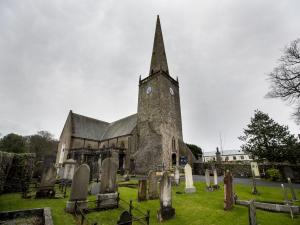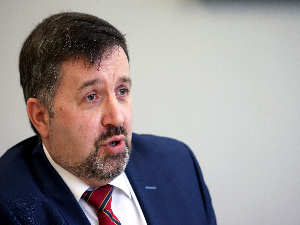
By Michael McHugh, Press Association
A near-2,000 mile pilgrimage by an Irish missionary could become a recognised European cultural route and trigger a tourism bonanza, campaigners said.
A satnav map of the evangelising journey of Bangor monk St Columbanus from Ireland to modern-day Italy in the early days of Christianity has been created.
It follows a donation from French benefactors.
Europe's leading human rights organisation has been urged to bestow official status on the saint's route in the month ahead.
Deborah Girvan, president of the European Columban Way, said: "This is escalating, it is growing, there is huge momentum behind this.
"Regardless of the outcome of Brexit, this is an era of intolerance and uncertainty.
"The hope is that this can become a symbol of peace and understanding and it could see a platform for significant educational and cultural exchanges.
"It has potential to unite Europe and not disunite it."
Columbanus's peregrination from Ireland to Bobbio in what is now northern Italy, where he set up a monastery, is celebrated as a golden age for Irish influence and learning in Europe.
Robert Schuman, one of the founding fathers of the European Union, said Columbanus was an inspiration for the modern Europe.
He travelled more than 3,000 kilometres across Ireland and Europe at the end of the 6th and the beginning of the 7th century.
Columbanus was born on the Wexford/Carlow border and became a monk in the monastery at Bangor, Co Down, under the abbot St Comgall for more than 20 years.
He crossed the Irish Sea with 12 companions, among them St Gall from whom the city St Gallen in Switzerland takes its name.
The saint founded monasteries in Annegray, Fontaine-les-Luzeuil and Luxeuil-les-Bains in the foothills of the Vosges mountains in eastern France, in Bregenz on the banks of Lake Constance in Austria and in Bobbio near Milan.
His journey forms the basis of the pilgrimage route called the Columban Way beginning in Bunclody, Wexford, where he was born and ending in Bobbio, where he died.
A stone from Bangor outside a church in Bregenz represents the post-Second World War rebuilding of Europe.
Kenneth Irvine, from the Friends of Columbanus Bangor, said a satellite navigation system paid for by the French had been a major advantage for tourism.
A phone app contains all the monastic sites, places to stay and eat and other places of interest.
Mr Irvine said he hoped it would become a cultural route of the Council of Europe, a post-Second World War human rights organisation which pre-dates the EU, but that needed a lot more planning and work.
He added: "The potential for tourism and bringing people is significant."
A Co Down tour guide has suggested there are 18 million faith tourists in the US who are interested in how Christianity started and the monastic movement.


 Three men set to go on trial for murder of journalist Lyra McKee
Three men set to go on trial for murder of journalist Lyra McKee
 Swann refuses to rule out resigning if budget is not changed
Swann refuses to rule out resigning if budget is not changed
 Fresh inquests ordered into deaths of 15 killed in McGurk’s bomb blast
Fresh inquests ordered into deaths of 15 killed in McGurk’s bomb blast
 Trial ends after man accused of murder of young showjumper is found dead
Trial ends after man accused of murder of young showjumper is found dead